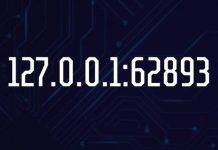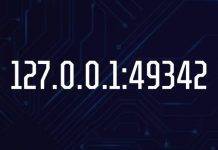In the digital era, data collection is a critical component of data analysis and annotation. The variety and volume of data have surged, making the methods used to collect it increasingly sophisticated. This involves gathering structured information through surveys, databases, and innovative approaches. The techniques employed in data collection vary based on the type of data, including images, videos, audio files, or text data.

This article aims to shed light on the various techniques used to collect different types of data. And to emphasize their importance in the broader context of data annotation and analysis. Learn these methods to harness the true potential of data in our increasingly connected world.
Traditional Data Collection Methods and Their AI-Driven Evolution
Every day, the world generates an astonishing 2.5 quintillion bytes of data. To put that in perspective, it’s 2.5 with 18 zeros following it! This data spans a vast range, from the Curiosity Rover’s findings on Mars to the snapshots of your latest vacation shared on Facebook. This immense volume of data underscores the evolution and importance of a well-thought-of data collection strategy.
- From paper to digital. Initially, data collection relied heavily on paper-based methods like surveys and forms. Now, digital platforms are taking over. They offer more efficient and expansive capabilities for gathering data.
- Databases evolving. Traditional databases have transformed into complex, dynamic systems. They can now handle larger volumes and varieties of data, from structured numerical information to unstructured text and multimedia.
- Automation’s rise. Automatic data collection has become a game-changer. Tools like web scraping software and AI algorithms can gather and process data faster. And even more accurately than ever before.
- Integration of technologies. Modern data collection often merges various technologies. For example, combining GPS data with online survey responses. It creates more contextualized datasets.
As we keep pace with these technological advances, the need for additional services becomes clear. These services ensure that any collected data is accurately interpreted and used effectively. This evolution from traditional to modern methods not only reflects technological progress. It also enhances our ability to make informed decisions based on diverse data sources.
Innovative Collection Techniques for Unconventional Data
Addressing unconventional data types demands inventive and advanced collection techniques. They are specifically designed to capture unique and often challenging data forms:
- Targeted audio collection. This one is used for gathering rare or unusual audio data. Such as specific dialects or environmental sounds, specialized recording equipment is essential. This might involve deploying teams to remote locations to capture authentic sounds. Or using sophisticated recording technology to ensure high-quality audio data.
- Custom image and video capture. In projects requiring unique visual datasets, standard stock images won’t suffice. Custom photography and videography become necessary. This could involve setting up specific scenes and using drones for aerial shots. Or employing high-resolution cameras for detailed imagery. For videos, it might mean recording specific activities, events, or behaviors.
- Interactive data collection via apps and social media. Leveraging mobile apps and social media platforms for data collection is a modern approach. This involves creating interactive platforms or using existing social networks. Especially to gather user-generated content (UGC), responses, and behaviors. It’s particularly effective for collecting real-time, large-scale, and diverse user data.
- Crowdsourcing for diversity in data. Crowdsourcing platforms can gather vast amounts of data from a diverse pool of contributors. This method is invaluable for projects requiring a wide range of perspectives. Such as linguistic studies, cultural research, or consumer behavior analysis.
- Advanced text scraping and analysis. Beyond basic web scraping, advanced algorithms and AI are used to collect and analyze text data from various digital sources. This includes sentiment analysis, trend spotting, and contextual data gathering. They are crucial for in-depth research projects and predictive analytics.
These modern-day techniques represent a paradigm shift in how we approach any data-related work. They allow for the capture of data that is not just comprehensive, but also rich in context and specificity. It enables deeper insights and more accurate analyses. Especially in complex fields like machine learning, cultural studies, and consumer research.
Now that we’ve collected the right data for our project, what do we do next?
Integrating Diverse Data for Comprehensive Research and Analysis
Combining different data types enhances the depth of research. In this process, the emphasis is on collecting data with high precision. It directly impacts the reliability of the analysis.
Data collection affects research outcomes significantly. Even small errors can skew results, leading to flawed conclusions. A relevant example of data collection in research is in climate studies. Precise temperature and atmospheric data collection are critical in modeling climate change scenarios. These models inform global environmental policies.
Here are some examples of case studies in diverse data utilization:
- Healthcare innovations. Researchers combine patient medical records, genetic information, and lifestyle data to tailor treatments. This integrated approach has revolutionized patient care and outcomes.
- Retail strategy development. Retailers blend customer data from different sources. Like social media, transaction records, and in-store interactions to create targeted marketing strategies. This approach boosts sales and increases customer engagement.
- Urban planning improvements. Urban data amalgamates from various sources. For example, traffic sensors, pollution monitors, and public surveys. It enables the design of more efficient urban spaces. This holistic approach leads to smarter, more sustainable city planning.
These cases illustrate how data collection in research benefits from an integrated approach. Here, combining varied datasets offers a more complete view. Therefore, the future of data analysis hinges on this multifaceted method. And it’s using diverse data to propel advancements across industries.
On a Final Note
The methods of data collection and integration are crucial in today’s information-rich environment. From traditional approaches evolving with technology to innovative techniques for unconventional data. The landscape of data gathering is as dynamic as it is critical.
Diverse data collection methods highlights their importance in providing precise insights. In many areas as research, business, or tech progress. These data collection and integration methods lay the groundwork for future innovations. Keep in mind that the power of data analysis depends on the quality and variety of the data we collect. As we keep improving these methods, the potential for the new advancements in AI is limitless.







































